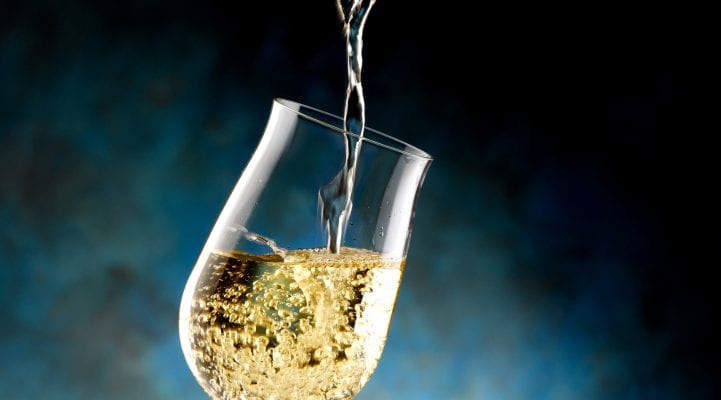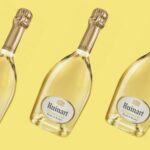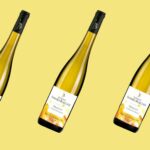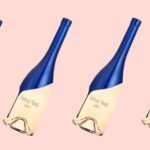Bubbles in wine are often associated with Champagne or classic sparkling wines. Yet some wines develop their bubbles naturally, without the addition of carbon dioxide or controlled secondary fermentation. How is this possible?
This article explores natural sparkling wines, their production process, the impact of wine aging, and the importance of spontaneous fermentation for the creation of natural fine bubbles.
Natural sparkling wines: a spontaneous phenomenon

Unlike traditional sparkling wines, which follow precise methods (such as the méthode champenoise), natural sparkling wines are created through more natural processes.
These wines undergo no addition of sugar or yeast after bottling. They owe their effervescence to spontaneous fermentation, which continues once the wine has been bottled, producing carbon dioxide naturally.
Characteristics of natural sparkling wines
- They are often poorly filtered, giving a slightly cloudy appearance.
- Their effervescence is softer and more natural than that of classic sparkling wines.
- They offer raw, fruity aromas, sometimes fermented.
These wines are also called "Pét-Nat" (Pétillant Naturel), an abbreviation that underlines their authentic character and minimalist production method.
The key role of spontaneous fermentation
Spontaneous fermentation is essential for the formation of natural bubbles.
What is spontaneous fermentation?
Unlike controlled fermentations, where winemakers add selected yeasts to control the transformation of sugar into alcohol, spontaneous fermentation relies solely on the yeasts naturally present on the grapes and in the cellar environment.
When these yeasts begin to transform the grape sugar into alcohol, they produce carbon dioxide. If fermentation ends after bottling, this gas remains trapped in the wine, creating the natural effervescence.
Why do some wines develop bubbles while others don't?
It all depends on a number of factors:
- Residual sugar: a wine bottled with fermentable sugars remaining will develop bubbles.
- Fermentation temperature: fermentation temporarily halted due to cold can resume in the bottle.
- Native yeasts: some are more active and resistant, favoring CO₂ production.
The influence of wine aging on effervescence
Wine ageing also plays a role in the presence of bubbles.
Young and sparkling wines
Natural sparkling wines are generally drunk young, as their effervescence is often short-lived. Unlike champagnes or crémants, which are made to age, these wines retain their bubbles better when drunk soon after production.
Aging and loss of effervescence
Over time, carbon dioxide can gradually escape through the cork or interact with other components in the wine. As a result, the older a natural sparkling wine gets, the more likely it is to lose intensity.
Some bottles also show a slight reduction in pressure due to the absorption of CO₂ by the wine itself.
The different categories of natural sparkling wine
Some wines develop bubbles naturally at different stages of production.
Ancestral method wines
This method involves bottling a wine during fermentation.
- No sugar or yeast is added after bottling.
- Fermentation ends in the bottle, producing a light effervescence.
- The result is fine bubbles and a more natural aromatic profile.
Lightly sparkling wines
Some still wines contain a small amount of natural CO₂ from fermentation. These are known as perlant or slightly effervescent wines.
Famous examples include:
- Muscadet sur Lie, which retains a slight sparkle thanks to prolonged contact with the yeast.
- Vinho Verde from Portugal, offering a fresh, lively mouthfeel.
Sparkling wines from long fermentations
Some wines retain their natural bubbles thanks to prolonged fermentation in vats, which leaves a slight sparkle in the bottled wine.
This type of production is common in certain wine-growing regions where cool temperatures slow down the fermentation process.
Why choose a natural sparkling wine?
Natural sparkling wines offer several advantages:
- Authenticity: they reflect the terroir and artisanal practices of the winemaker.
- Less intervention: few sulfites, no addition of industrial yeast.
- Fresh and lively: their natural sparkle gives a pleasant mouthfeel.
They are particularly appreciated as an aperitif, with seafood or light dishes.
How do you store natural sparkling wine?
To preserve their effervescence, we recommend :
- Keep them cool: a stable temperature prevents the bubbles from altering.
- Store them in an upright position: this limits the loss of carbon dioxide.
- Young wines: they reach their peak in the first few years after bottling.
Once opened, the use of an airtight cap prolongs their freshness for one or two days.
Conclusion
The natural bubbles in sparkling wines are the result of a spontaneous process, in which fermentation plays a key role. Thanks to spontaneous fermentation, wine aging and indigenous yeasts, some wines retain a unique effervescence without excessive human intervention.
Choosing a natural sparkling wine means opting for an artisanal approach, where the terroir and know-how of the winemaker are fully expressed.
If you enjoyed this article, please read the following article "Great German grape varieties to add to your collection", which may also be of interest to you!





